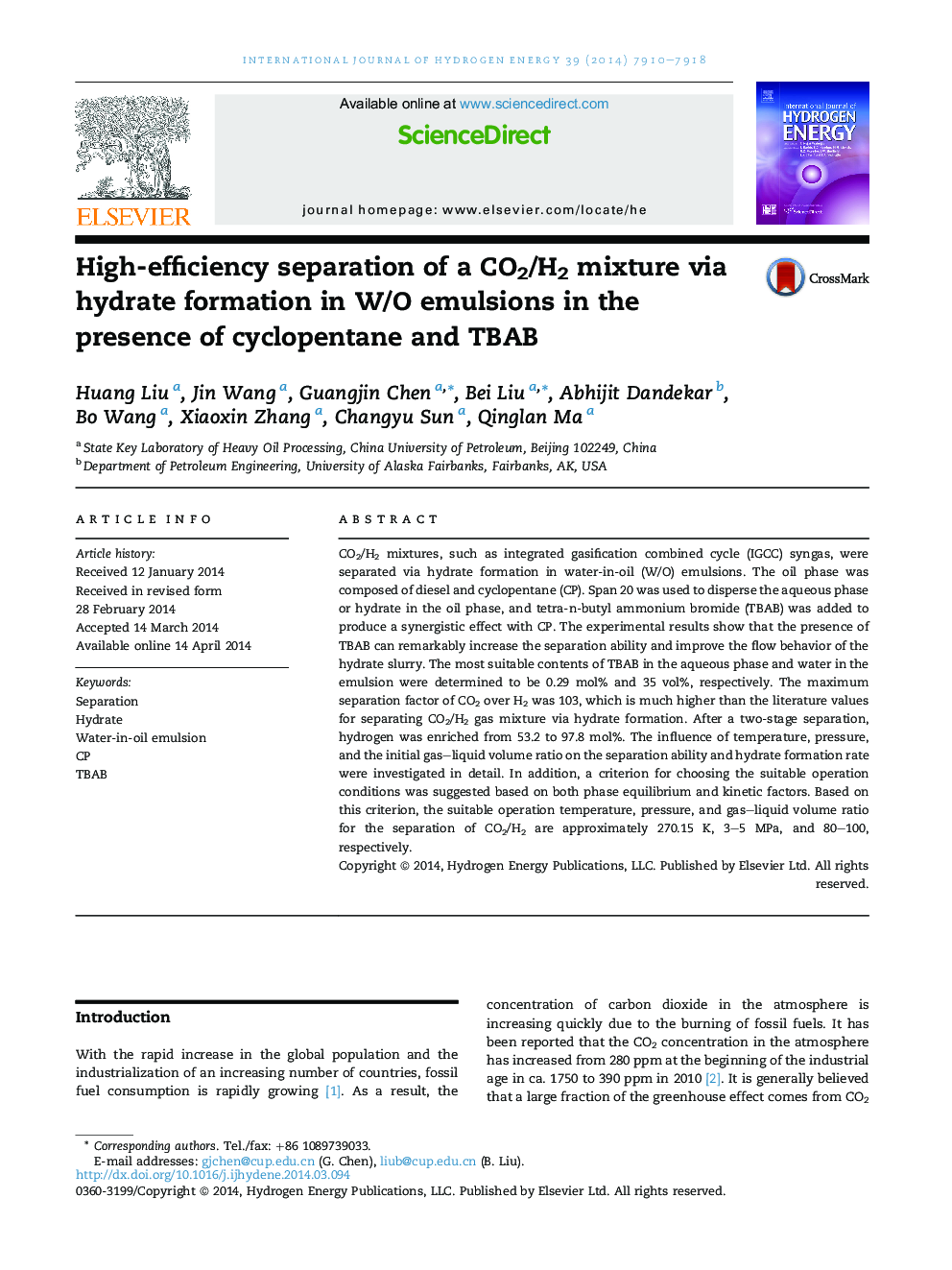| Article ID | Journal | Published Year | Pages | File Type |
|---|---|---|---|---|
| 7719394 | International Journal of Hydrogen Energy | 2014 | 9 Pages |
Abstract
CO2/H2 mixtures, such as integrated gasification combined cycle (IGCC) syngas, were separated via hydrate formation in water-in-oil (W/O) emulsions. The oil phase was composed of diesel and cyclopentane (CP). Span 20 was used to disperse the aqueous phase or hydrate in the oil phase, and tetra-n-butyl ammonium bromide (TBAB) was added to produce a synergistic effect with CP. The experimental results show that the presence of TBAB can remarkably increase the separation ability and improve the flow behavior of the hydrate slurry. The most suitable contents of TBAB in the aqueous phase and water in the emulsion were determined to be 0.29Â mol% and 35Â vol%, respectively. The maximum separation factor of CO2 over H2 was 103, which is much higher than the literature values for separating CO2/H2 gas mixture via hydrate formation. After a two-stage separation, hydrogen was enriched from 53.2 to 97.8Â mol%. The influence of temperature, pressure, and the initial gas-liquid volume ratio on the separation ability and hydrate formation rate were investigated in detail. In addition, a criterion for choosing the suitable operation conditions was suggested based on both phase equilibrium and kinetic factors. Based on this criterion, the suitable operation temperature, pressure, and gas-liquid volume ratio for the separation of CO2/H2 are approximately 270.15Â K, 3-5Â MPa, and 80-100, respectively.
Related Topics
Physical Sciences and Engineering
Chemistry
Electrochemistry
Authors
Huang Liu, Jin Wang, Guangjin Chen, Bei Liu, Abhijit Dandekar, Bo Wang, Xiaoxin Zhang, Changyu Sun, Qinglan Ma,
